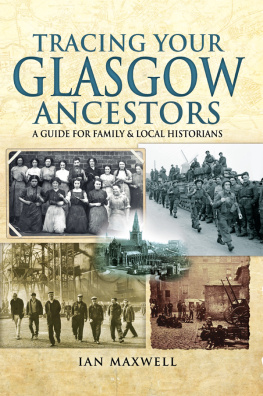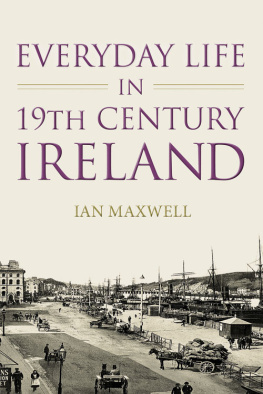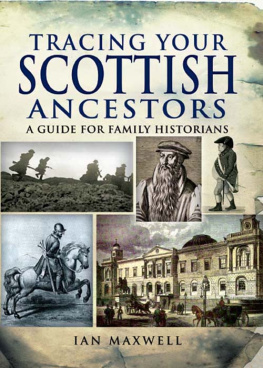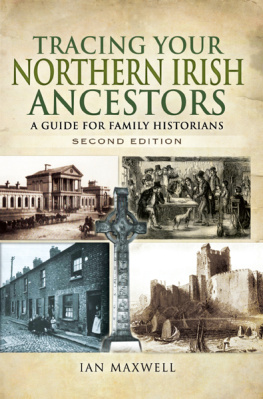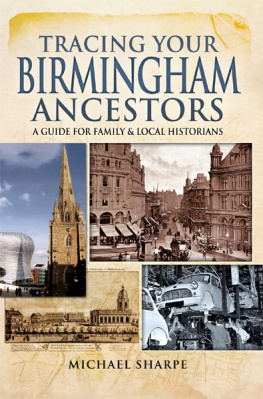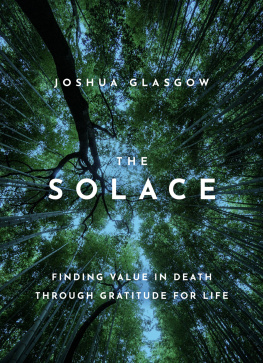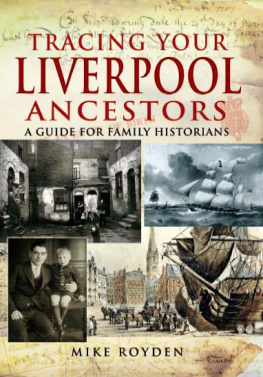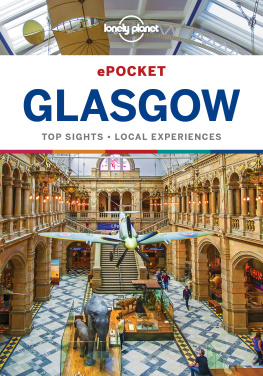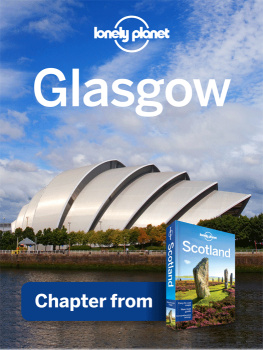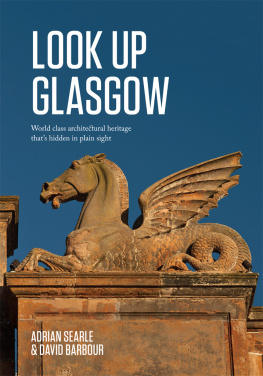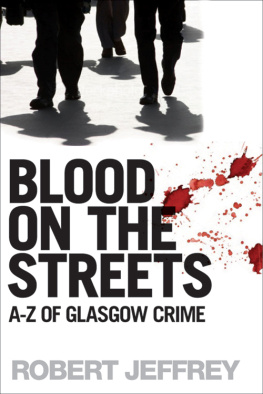
TRACING YOUR GLASGOW ANCESTORS
FAMILY HISTORY FROM PEN & SWORD
Tracing Secret Service Ancestors
Tracing Your Air Force Ancestors
Tracing Your Ancestors
Tracing Your Ancestors from 1066 to 1837
Tracing Your Ancestors Through Death Records
Tracing Your Ancestors Through Family Photographs
Tracing Your Ancestors Using the Census
Tracing Your Ancestors Childhood
Tracing Your Ancestors Parish Records
Tracing Your Aristocratic Ancestors
Tracing Your Army Ancestors 2nd Edition
Tracing Your Birmingham Ancestors
Tracing Your Black Country Ancestors
Tracing Your British Indian Ancestors
Tracing Your Canal Ancestors
Tracing Your Channel Islands Ancestors
Tracing Your Coalmining Ancestors
Tracing Your Criminal Ancestors
Tracing Your East Anglian Ancestors
Tracing Your East End Ancestors
Tracing Your Edinburgh Ancestors
Tracing Your First World War Ancestors
Tracing Your Great War Ancestors: The Gallipoli Campaign
Tracing Your Great War Ancestors: The Somme
Tracing Your Great War Ancestors: Ypres
Tracing Your Huguenot Ancestors
Tracing Your Jewish Ancestors
Tracing Your Labour Movement Ancestors
Tracing Your Lancashire Ancestors
Tracing Your Leeds Ancestors
Tracing Your Legal Ancestors
Tracing Your Liverpool Ancestors
Tracing Your London Ancestors
Tracing Your Medical Ancestors
Tracing Your Merchant Navy Ancestors
Tracing Your Naval Ancestors
Tracing Your Northern Ancestors
Tracing Your Pauper Ancestors
Tracing Your Police Ancestors
Tracing Your Prisoner of War Ancestors: The First World War
Tracing Your Railway Ancestors
Tracing Your Royal Marine Ancestors
Tracing Your Rural Ancestors
Tracing Your Scottish Ancestors
Tracing Your Second World War Ancestors
Tracing Your Servant Ancestors
Tracing Your Service Women Ancestors
Tracing Your Shipbuilding Ancestors
Tracing Your Tank Ancestors
Tracing Your Textile Ancestors
Tracing Your Trade and Craftsmen Ancestors
Tracing Your Welsh Ancestors
Tracing Your West Country Ancestors
Tracing Your Yorkshire Ancestors
TRACING YOUR GLASGOW ANCESTORS
A Guide for Family and Local Historians
Ian Maxwell
First published in Great Britain in 2017
PEN & SWORD FAMILY HISTORY
an imprint of
Pen & Sword Books Ltd
47 Church Street
Barnsley
South Yorkshire
S70 2AS
Copyright Ian Maxwell, 2017
ISBN 978 1 47386 721 5
eISBN 978 1 47386 723 9
Mobi ISBN 978 1 47386 722 2
The right of Ian Maxwell to be identified as Author of the Work has been asserted by him in accordance with the Copyright, Designs and Patents Act 1988.
A CIP catalogue record for this book is available from the British Library.
All rights reserved. No part of this book may be reproduced or transmitted in any form or by any means, electronic or mechanical including photocopying, recording or by any information storage and retrieval system, without permission from the Publisher in writing.
Pen & Sword Books Ltd incorporates the imprints of Pen & Sword Archaeology, Atlas, Aviation, Battleground, Discovery, Family History, History, Maritime, Military, Naval, Politics, Railways, Select, Social History, Transport, True Crime, Claymore Press, Frontline Books, Leo Cooper, Praetorian Press, Remember When, Seaforth Publishing and Wharncliffe.
For a complete list of Pen & Sword titles please contact
PEN & SWORD BOOKS LTD
47 Church Street, Barnsley, South Yorkshire, S70 2AS, England
E-mail:
Website: www.pen-and-sword.co.uk
INTRODUCTION
This book is about how you can trace your ancestors in Scotlands largest city and the fourth largest in the United Kingdom. It is designed for a wide audience: for the beginner who will refer to it frequently as they become familiar with the historical terms and technical information, and for the experienced researcher who is keen to tap into underused sources. Extensive cross-referencing allows the reader to follow many paths and to see the relationships between historical events, people and themes. Above all, it is intended as a handbook that can be taken to archives and libraries as a quick means of reference which, I trust, will enhance what is a fascinating subject.
Of course, searching for your family history is not simply a matter of looking at old records or scrolling through the bewildering array of information available online. Once you have found out where your forebears lived and are buried visit the places if you can you may be lucky and some of the old houses and buildings mentioned in the records will have survived. Visiting such places can give you a better idea of the world your ancestor inhabited and, at the very least, offers the opportunity to visit one of Britains most fascinating and vibrant cities.
THE CITY
Many people have an image of Glasgow as a large industrial city dominated by grimy Victorian tenements. It is therefore a surprise to find the origins of the city date back to the late sixth century and the arrival of St Kentigern (also known as St Mungo), who founded a church made of wattle and clay at a spot where Glasgow cathedral now stands. But it was not until the eighteenth century that Glasgow grew from a modest university town to become Britains main hub of transatlantic trade with North America and the West Indies. This was reflected in its fine streets and public buildings. Daniel Defoe visited the city in 1724 and thought Glasgow a very fine city; the four principal streets are the fairest for breath, and the finest built that I have ever seen in one city together. It impressed him most as a city of business; here is the face of trade, as well foreign as home trade; and, I may say, tis the only city in Scotland, at this time, that apparently increases and improves in both. In a word, he concluded, tis one of the cleanest, most beautiful, and best-built cities in Great Britain.

Valentines postcard of Glasgow cathedral and Necropolis, 1893.
By the onset of the Industrial Revolution, the population and economy of Glasgow and the surrounding region expanded rapidly to become one of the worlds pre-eminent centres of chemicals, textiles and engineering, most notably in the shipbuilding and marine engineering industry. In doing so it absorbed migrants from the Scottish Lowlands, Highlands and Ireland in rapidly increasing numbers. By the end of the nineteenth century it could justifiably lay claim for itself the title of Second City of the British Empire.
The twentieth century saw the city enter a lengthy period of economic decline and rapid de-industrialisation, leading to high unemployment, urban decay and a reduced population by the 1960s. In the 1990s, however, it emerged again from its industrial past as European City of Culture in 1990, the UK City of Architecture and Design in 1999 and host of the Commonwealth Games in 2014. Today Glasgow has some of the best-financed and most imaginative museums and galleries in Britain among them the showcase Burrell Collection and the palatial Kelvingrove Art Gallery and Museum , and a the surprising variety of architecture, from long rows of sandstone terraces to the elegant Art Nouveau designs of Charles Rennie Mackintosh.

